How do dogs see and can they distinguish colors?

Dogs are known to be excellent hunters. And they are perfectly oriented in space. Their senses help them in this. Dogs' eyes are an analyzer not of primary need, but its abilities are quite high, although they are inferior to human ones.
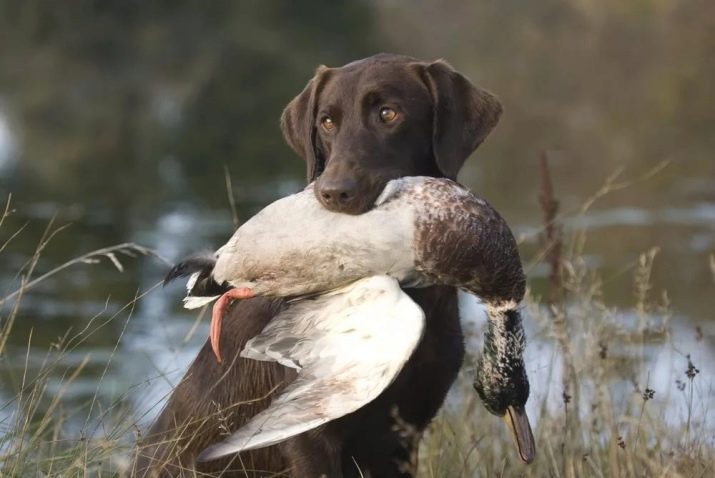
Eye structure
Anatomically, a dog's visual analyzer is very similar to that of a human. In front of the eyeball is the cornea - this is its outer shell. Normally, it is clean, transparent and shiny. Its purpose is to protect the eyeball from damage. Also, the outer shell is involved in the refraction of light.
Under the cornea is the middle layer of the eye - the iris. In its center is the pupil, and behind it is the lens. In addition, the iris is formed by a network of blood vessels that feed the eye.
Muscle fibers are attached to the lens. By contracting and relaxing, they change its curvature, providing vision of objects at different distances.
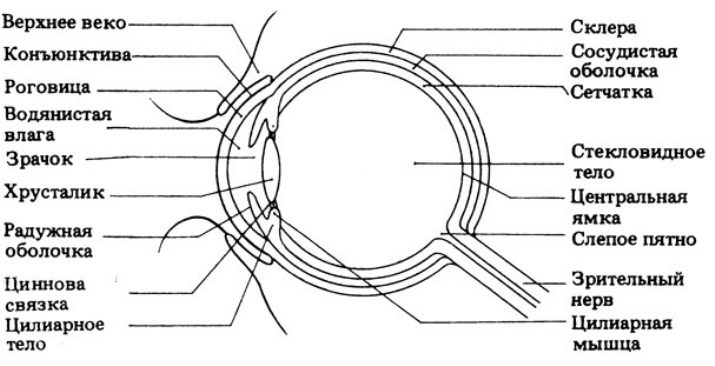
The pupil and lens are directly involved in the visual perception of the surrounding reality. The light flux, passing and refracting through them, enters the retina, where it is converted into the corresponding signals.
The retina is the third layer of the eyeball. Its complex design allows it to modify visual impulses and transmit them to the brain. The final picture of the world is formed here.
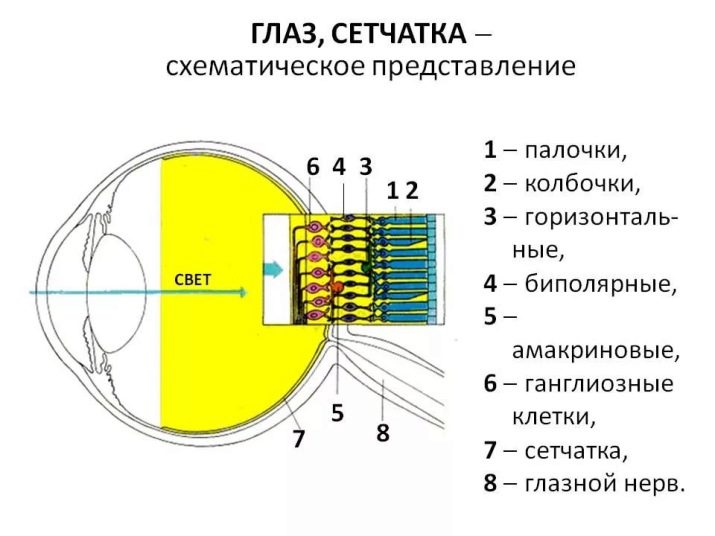
In addition to the aforementioned eye elements that bring the eyes of an animal and a person closer together, there are others that are strictly specific to dogs.
So, the eye of tetrapods has an additional outer shell called the third eyelid... It is a thin film that envelops the eye. It protects it from debris and dust. And it constantly moisturizes, thanks to the lacrimal gland.
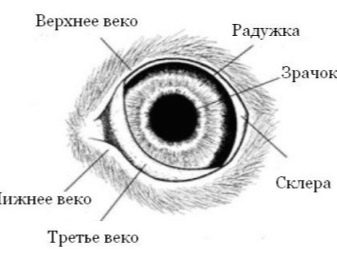
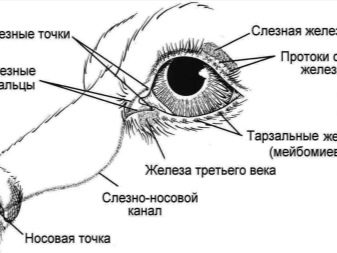
The retina deserves special attention. It is its features that provide a specific vision of the world around the dog.
As you know, certain cells in the structure of the retina, called rods and cones, are responsible for color perception and orientation at dusk.
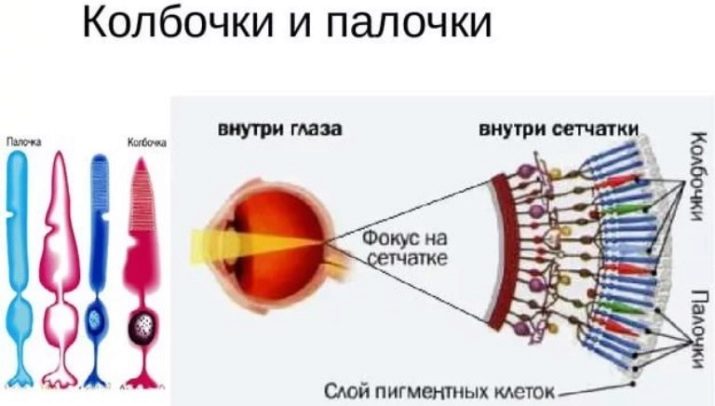
The cones are responsible for the color perception of objects during the day, and the rods are responsible for visual orientation at night. In tetrapods, rods predominate in the reticular structure. There are several times more of them here than in humans. As for the cones, their number is much smaller.
Also, the caudate lacks a macula, which in humans is located in the center of the retina and is an accumulation of cones. But there is an additional crystalline layer called the tapetum. He plays a special role in the visual adaptation of the animal.

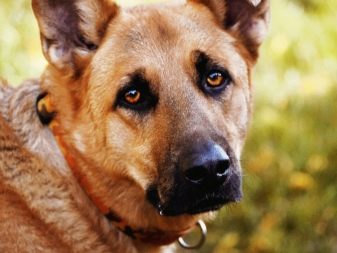
The retina is conventionally divided into 2 parts:
- upper - provides the dog with visual orientation in the dark, is responsible for visual acuity;
- lower - is responsible for daytime vision.
The eyes of our beloved pets are designed in such a way as to help them quickly navigate in space and not miss prey. This is inherent in their original nature as a wild predator and dexterous hunter.

Are colors distinguishable?
The statement that the eyesight of our beloved pets is black and white is wrong. Dogs see and analyze the world around them in different colors, although their palette, in comparison with humans, is rather scarce.
To begin with, color vision for dogs is provided by the cones of the retina. But their number is negligible.
In humans, these cells are of 3 types:
- captures long wavelengths of the color spectrum and detects red, orange tones;
- reacts to medium waves of yellow, green colors;
- sensitive to short, blue-violet waves.
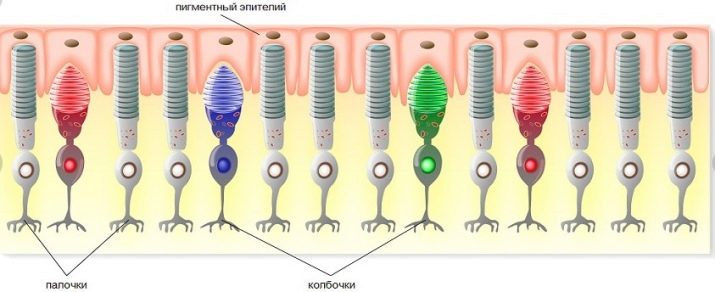
Dogs have only 2 types of cones.
The perception of the dog is not subject to green and red shades. He perceives them in white or gray colors. But the blue, purple and yellow colors of dogs can be distinguished perfectly. Thus, they exhibit selective color blindness, and their vision can be compared to that of people suffering from color blindness.
How, in this case, to explain the fact that dogs are guided in traffic signals? There are even special breeds - guide, accompanying people with poor eyesight. The fact is that in this case the guide dog reacts not to a change in color, but to a change in the brightness of the signal. And this helps them to correctly assess the situation.
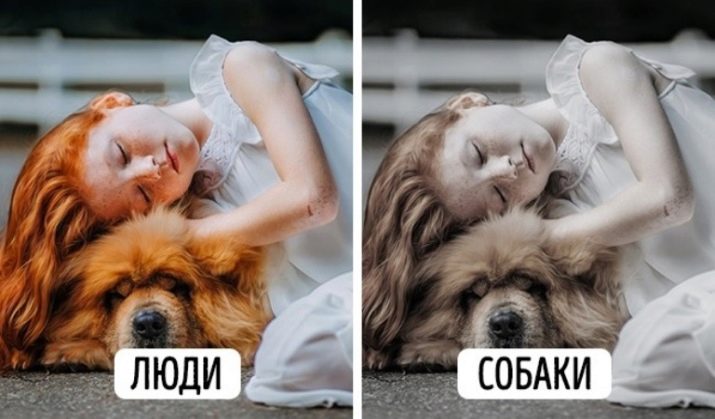
Dog breeders have repeatedly noted a change in the behavior of four-legged pets when they see a certain color. For example, a dog reacted sharply to people in yellow clothes. It also confirms that they have color vision.
This canine "preference" in colors is used with benefit in their work by trainers. Using in the process of practice toys and attributes of colors to which their wards are sensitive, they manage to achieve positive results much faster.
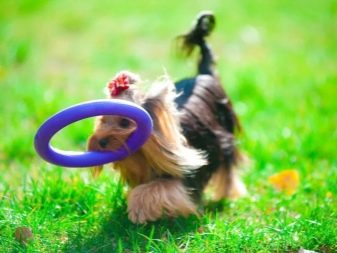
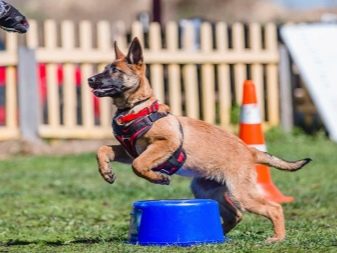
How does lighting affect?
The dog's vision is universal, since this animal is satisfactorily oriented both day and night.
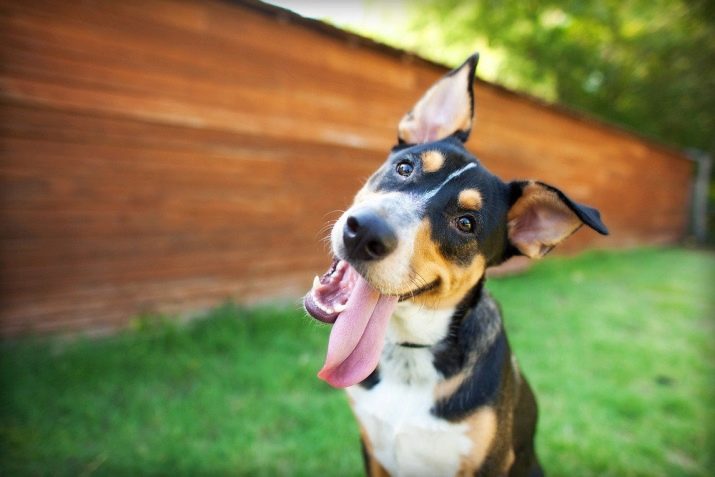
Orientation in the dark
Dogs have a fairly well developed night vision. This is achieved with rods, which are present in the structure of the retina in large numbers. It is so great that dogs see at night and distinguish objects four times better than humans.
The already mentioned tapetum helps dogs to see perfectly in complete darkness. It is a reflective membrane that has been compared to headlights or mirror-like dusting. It is located in the upper part of the retina, which is responsible for night vision.

Light, passing through the retina, is reflected on it through the membrane again. Thus, the image is clearer and more contrasting.
Animals see objects in gray at night. And they demarcate, almost, all of its 50 shades.

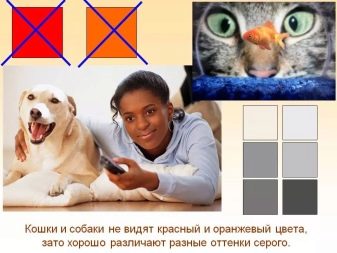
Daylight
During the day, the four-legged ones also navigate well. And I must say that it is easier for them than for people. The human eye is sensitive to too bright light. It's hard for us to look at the sun with wide eyes, we have to squint.
In dogs, the lower part of the retina contains a dark pigment that helps to neutralize the excessive flow of bright light. Therefore, they are much less susceptible to harsh light.
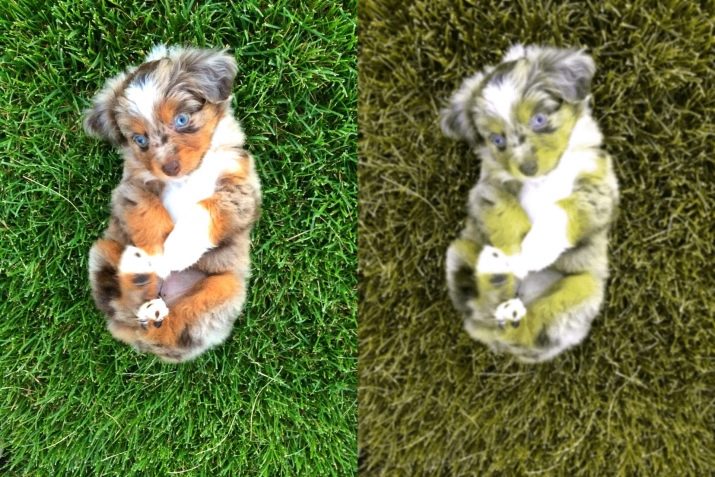
Another feature of the animal's eyes is the glow when a light flux hits them. You may have noticed that at certain times your pet's eyes begin to glow yellow or a different color. At the same time, they turn into monochromatic circles, in which even the pupil is not visible.
The reason for this is again the reflective membrane, thanks to which the dogs orient themselves so well in the dark. The glow color can be yellowish, as well as with green and brownish-brown tints. Or combine several tones at once: yellow or green at the top, green-blue at the bottom. This is due to the color of the membrane. In dark-eyed animals, it is darker than in breeds with a light iris.
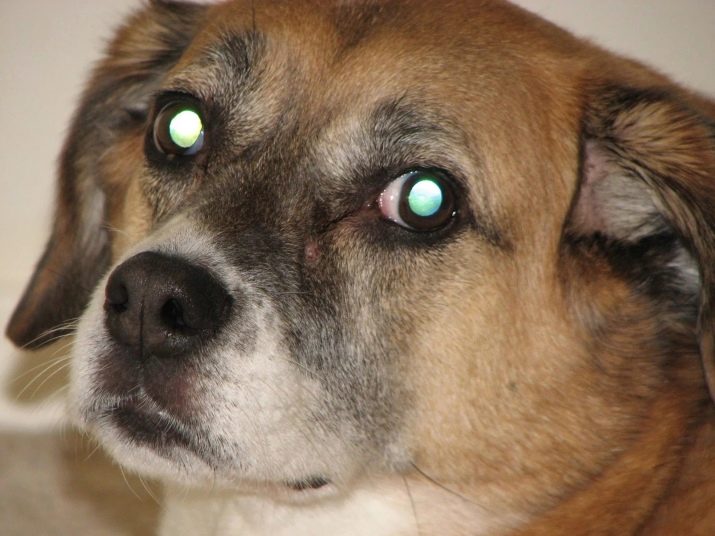
Range and breadth of view
In addition to the fact that dogs do not perceive a decent range of colors and are perfectly oriented in the dark, their vision has other features. This time they are associated with clarity and breadth of perception.
The dog cannot boast of visual acuity. The reason for this is the absence of a macular spot on its retina, which is characteristic of the human eye. It is here that a large number of cones are concentrated. Thanks to the yellow spot, we are able to see objects both near and far (if we are talking about a healthy person).
The retina of dogs is devoid of a macular macula, and therefore their visual acuity is useless.
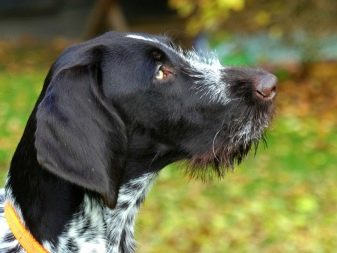
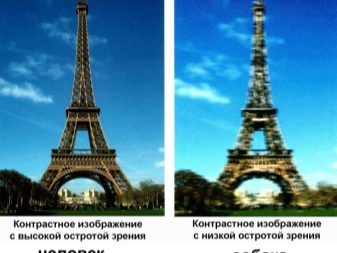
In order for the dog to clearly see any object, it must be at least 30 cm away from it. From which it was concluded that the visibility of these animals is akin to people with a slight degree of hyperopia. However, despite the difficulty of focusing on nearby objects, dogs are adept at judging the distance to a target.
Another property of the dog's eye is the perception of a moving object. His dog also identifies at a distance of 900 m. Excellent property for hunting breeds. But if the same target is immobilized, then the tailed beast will be able to see it no further than 600 m. The visibility of objects in dynamics is provided by a large number of rods in the dog's retina.
They also determine the panoramic vision of tetrapods. That is, they perceive the image with the entire retina due to the absence of a macular macula.
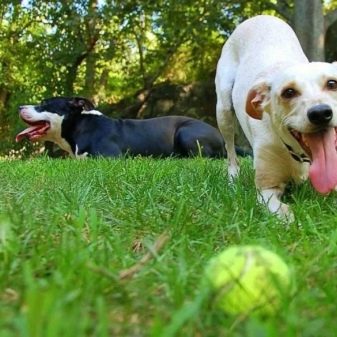
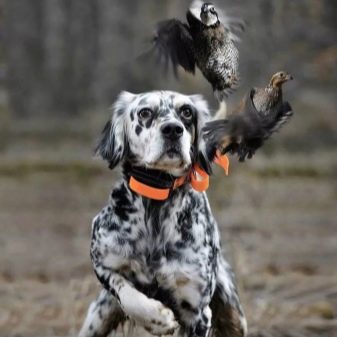
In terms of latitude or field of view, dogs average 250 °. This is significantly more than that of a human. And it depends on the location of the visual axis of both eyes. In animals, they diverge at an angle of 20 °, and in humans, they are parallel. A large degree also affects the shape of the visual field. It is not round, like a human, but has an oval shape, which becomes a significant advantage during hunting - it allows you to view a larger space.
But the field of view is not the same for all breeds. This indicator varies based on the structure of the canine skull. The narrower the muzzle and the longer the nose, the higher the degree of visual latitude.
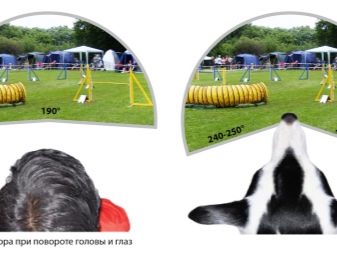

How do dogs see people and the world around them?
If for a person eyes are 90% of information, then for four-footed vision is not at all in the first place. Hearing and scent are much more important to them.
Nevertheless doggie visually adapt well in space... They distinguish between individual colors, perceive distant static objects. However, their vision provides specific goals. Its main task is fixation on dynamic objects, that is, moving in space.
By the way, it's not for nothing that they say that when an angry grinning dog rushes at you, first of all, stop.Thus, you will be less attractive to her.
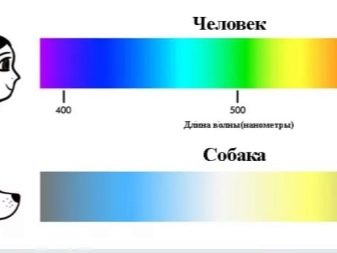
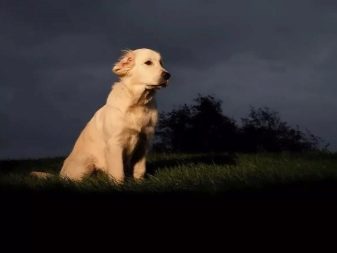
Dogs living in the wild and domesticated individuals perceive the world around them the same way. And even their favorite owners of pets close up are perceived by them as a blurry outline. A loyal dog recognizes its owner from a thousand not by facial features, eye color or nose shape, but by completely different criteria.
Interestingly, the dog's eye perceives 80 frames in 1 second. Compared to human, this is 56 more frames. Therefore, four-legged friends are not at all interested in TV, because the frame rate in it is 60 Hz. Pussies get the picture on the screen in the form of a blurred spot.
Although some modern TVs have a frequency of 100 Hz and are available for viewing by dogs. Currently under development for the creation of "dog" programs. They will help while the four-legged leisure time when their owners are busy.
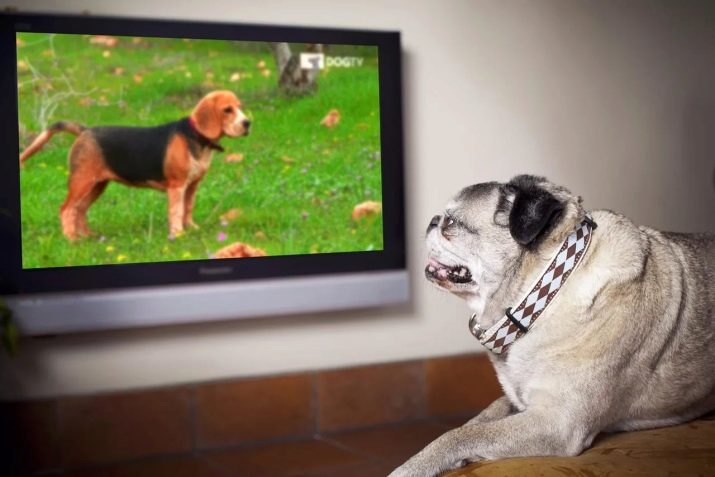
The main differences from human vision
The structure of the organ of vision of humans and dogs is very similar. And they coincide in all main indicators. But small differences make the canine and human vision of the world around them fundamentally different.
- Their main difference lies in the difference in the color spectrum. In humans, it is much more extensive, due to the large variety of cones.
- The predominance of sticks in furry ones helps them to orient themselves several times better in the darkness of the night than to humans, while distinguishing objects in fairly clear outlines.
- Shaggy visual acuity is significantly lower than that of humans.
- But dogs can boast of a breadth of field of view, 70 ° higher than the human indicator.
- Human vision is perfect. Allows you to see near and far, to separate the sea of colors and shades, to perceive objects of any size and configuration. The dog's eye does not see well at close range. And instantly perceives moving objects.
These are the main criteria that distinguish our vision from canine vision. Such differences are caused, first of all, by the purpose of the organ of vision, which for us and for them has a different meaning.
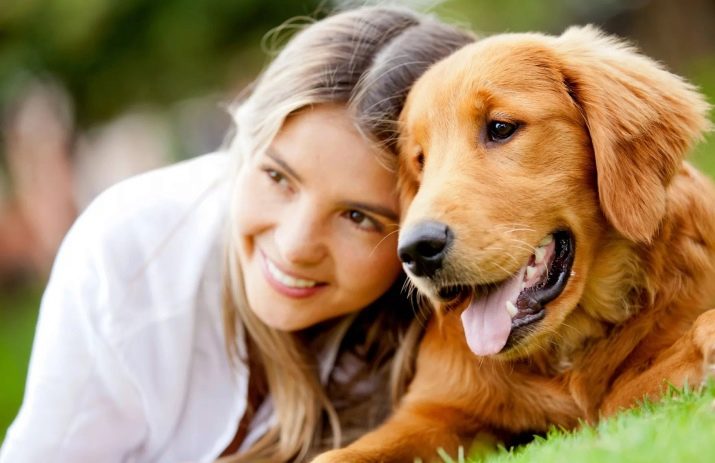
How to test your eyesight
The eyes of tailed beasts, like humans, undergo changes that can cause destructive processes and decreased vision. There may be several reasons for this: age, injury, some diseases, including infections.
You are able to recognize a visual problem in a pet even at home. To understand that your dog's eyes are out of order, first of all, the appearance of visible changes in the organ itself will help. It can be profuse discharge from the eyes, watery eyes, drooping of the upper eyelid, redness or clouding of the eye. Such phenomena almost always affect the ability of visual perception.
It is possible to understand that the animal has become difficult to see by its behavior. Elementary, watch how the dog moves. With vision problems, her movements will become timid and uncertain. The pet will start bumping into corners, it will be difficult for him to fit into the doorway.

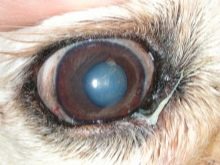

To dispel all doubts about the dog's ability to see adequately, there are special tests.
The easiest is to move your hand in front of the dog's face. If there is no response from the animal, and there is no reaction of the pupil to a change in the intensity of light from the held hand, it is worth considering.
Another test involves creating an obstacle course from individual objects. One person releases the animal at the beginning of the distance, and the other, being at the end of the runway, calls out to him. How accurately, bypassing all obstacles, the pet will cover this distance, will speak about the presence or absence of eye changes.
It is worth noting that home experiments will only allow you to suspect that your dog has vision problems. After that, you should seek help from a specialist.Using special equipment, he will determine the nature of the violation, establish a possible cause and suggest ways to solve the problem.
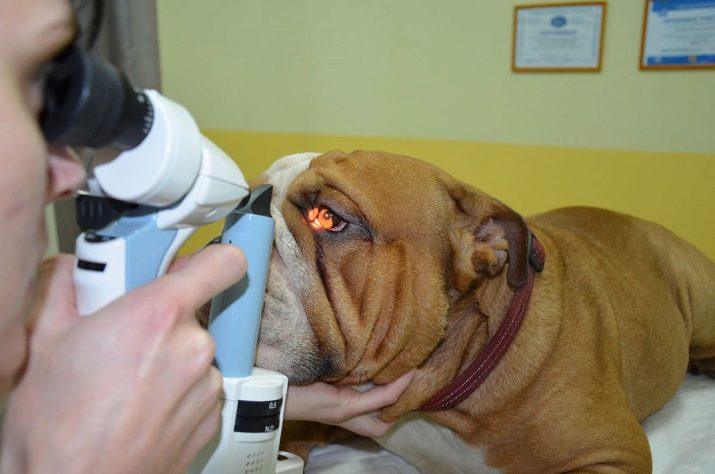
It is probably wrong to say that dogs see the world around them worse or better than we do. Their vision is fundamentally different from ours. But nevertheless, it gives them the opportunity to perfectly adapt and exist in the world around them, to be on the guard of order and to master some "professions".
Interesting facts about dog vision are waiting for you in the video below.






































